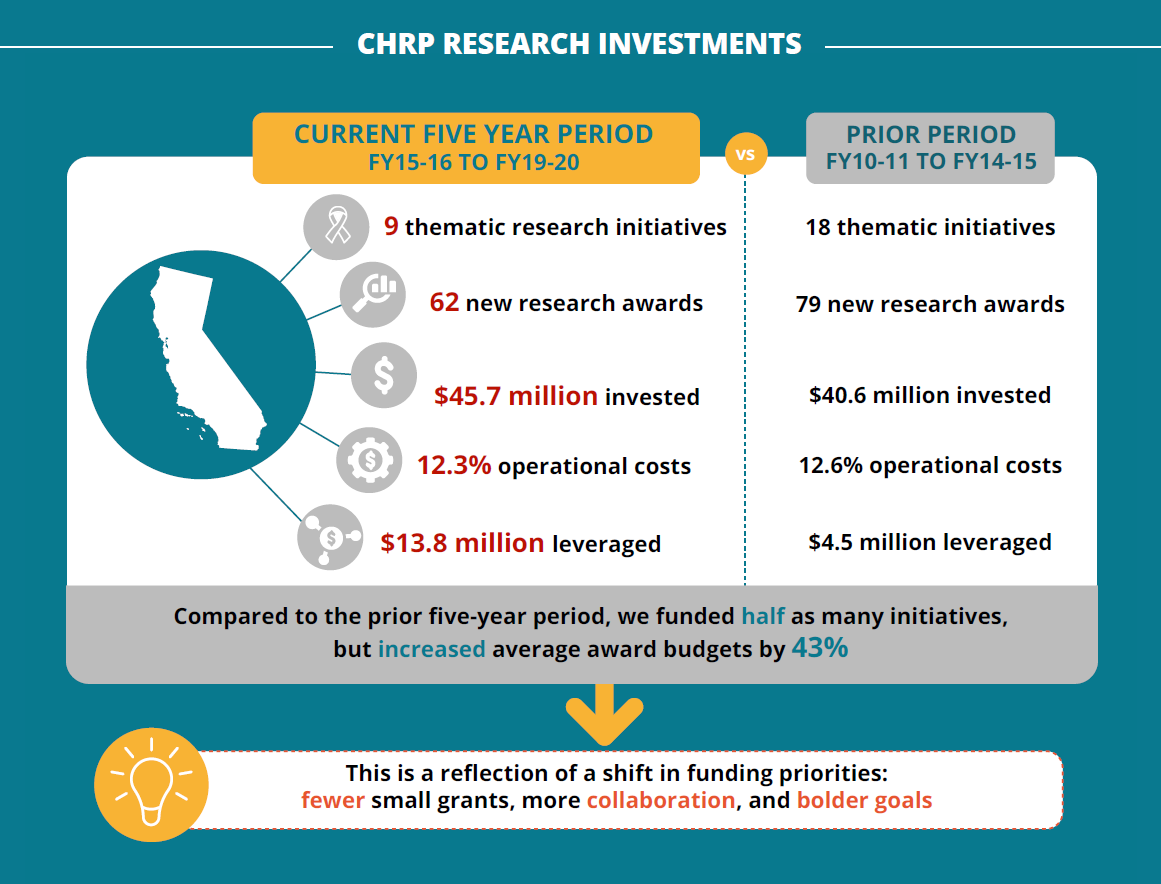Our Impact
EVALUATION OF PROGRAM OUTCOMES, 2015-2020
By design, CHRP funds research that primarily serves communities that are highly impacted by HIV,
such as people of color, sexual and gender minorities, and other communities that are experiencing
health disparities. The program also preferentially supports students/trainees from groups that are
underrepresented in science, and early career investigators, building diversity at the start of the pipeline
of research personnel.
In 2021 we conducted an outcome evaluation to assess the degree to which activities reflected our
mission, to quantify the programs recent effectiveness, to inform strategic program planning and
improvement, and to provide accountability and transparency for our stakeholders.
Major output findings presented in this report demonstrated that CHRP has improved on all indicators
over the study surveillance period by:
- More than doubling (39% to 86%) the number of grants supporting communities highly impacted
by HIV; - Nearly doubling of the average number of students/trainees supported per award (4.2 vs 2.6);
- Nearly doubling the number of pilot awards to early-stage investigators (29% to 50%); and
- Increased diversity among Principal Investigators by demonstrating they are from communities
highly impacted by HIV (21% to 28%).
Similar improvements were noted with respect to outcome findings through:
- Doubling of the number of peer reviewed scientific publications (254 vs 126) from CHRP funded
projects, resulting in 5.7 publications per $1M spent; greater than the national average which is
4.2; - Approximately two-thirds (67%) of CHRP awardees reported using project findings to securing
additional funding through external sources five years later. For these awardees $1 invested by
CHRP in pilot awards resulted in $14 secured in leveraged funding from external sources, and $17
in new leveraged funding per $1 invested in UC campuses specifically; and - A five-fold increase (47 vs 9) in the number of policy briefs developed by CHRP grantees.
The two-page executive summary of the report can be found here (PDF).
The full report can be found here (PDF).

